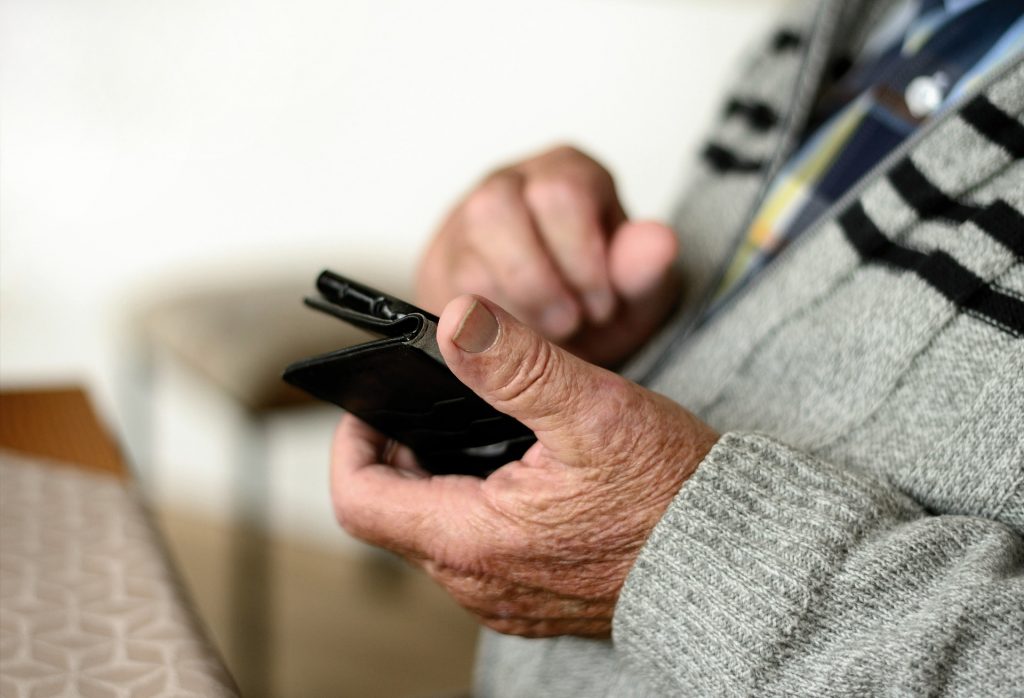As life expectancy increases across the world, how will technology and the digital world assist the youth of today as the elders of tomorrow?

(Image: Pixabay)
The subtitle of this article may provide a sometimes unwelcome reality: we all get older. No matter how confusing or alien the world may seem to some of us, it’s going to be a whole lot different for the majority of old people. Just think about how much the technological world has changed since the early lives of our grandparents. When my grandad was my age, computers were quite literally the size of buses and ‘tweets’ were something only birds did. What would the world be like if I reached his age?
Pensioners’ Digital Dismay
It’s pretty recognisable that older people find dealing with technology more frustrating than most people. We all have a story of some time where we’ve had to explain what a hashtag is or how the computer hasn’t actually deleted those emails, they just aren’t on the screen. I for one had to spend 20 minutes of my life I’ll never get back explaining to my Dad that he wasn’t reading “twitters” and neither does anyone else.
According to one leading study, conducted by a group of scholars led by Shengzhi Wang, frustration is one of the most influential factors in deterring older adults from furthering their use of technology1.
Another considerable factor found by the study was the lack of knowledge surrounding tech terminology, largely caused by older people missing out on the prolonged exposure and widespread practical usage of such technologies in the workplace. Participants of the study displayed a lack of self-confidence surrounding the usage of technology whilst disliking patronising help or being thought of as stubborn or unintelligent; this all contributes to a lack of motivation to engage with technology.
Both of these ideas are underscored by a concept termed ‘ageing in place’. This conveys the idea of how most people want to maintain their independence as they age. Although applicable to interior design and social support networks, technology can be seen as a considerable enabler of ageing in place. Yet, despite this somewhat obvious conclusion, older people are not generally consulted during the development of mainstream technologies; therefore, before technology and the digital world can fully assist the aged population of tomorrow, a wider discussion must be opened and supportive education promoted.
My Grandma, A New iPad & FaceTime
I thought about how interesting this topic could be during one of my little weekly FaceTime chats with my grandma. During this particular conversation, I began to realise how adept she had become at using the iPad we got for her for Christmas and it reminded me of when she first got her iPad.
Unfazed by the new device, I vividly recall how she loved it from the start: despite not knowing how to use it for anything. We chose to get her this particular present to connect with her seven other siblings, spread about to all corners of the globe. Due to this, the first thing we showed her how to do was video calls; after which I don’t think she called anyone for at least two months after she got it. Teething troubles from the early stages -more specifically, only being able to see her chin or her forehead- have now been worked out and she uses many more of her device’s functions.
Nevertheless, the context for this gift demonstrates one huge benefit of technology for helping older people and enabling ageing in place. Passing away the following October, this happened to be the last present my grandad gave her. After a marriage lasting 53 years, I couldn’t have anything more than a relatively superficial understanding of how this affected her. The NHS recognises the death of a spouse as a proven source of depression and social isolation among older people; something made all the more worrying when considering how loneliness expediates both mental and physical illnesses including heightened blood pressure, heart disease and dementia2. As such, the lifeline provided by my grandma’s newfound ability to connect with people was unquestionably valuable.
Further Possibilities of Assistive Technology
The context of the restrictive conditions of the pandemic cannot be ignored when considering the scope of the social value of technology to older people. As naturally social creatures, humans need social interaction to maintain good health. As such, there is sufficient evidence to suggest that a lack of interpersonal contact and social exercise can precipitate Alzheimer’s disease. One interesting way of socially excersing the brain is through games and many carehomes employ this technique.
ADAMAAS glasses serve as an adaptable sensory aid to recognise both faces and tasks alongside providing textual, visual or avatar-based directions to meaningfully assist when mistakes are made
Wearable tech demonstrates considerable opportunities for dealing with a greying population. The use of such devices varies depending on the mobility and capacity of self-care among each older person like smartwatches that monitor diet, blood pressure or location, which may be geared towards those less able to look after themselves. This also includes ‘smart glasses’ developed under the “Adaptive Mobile Action Assistance in Daily Living Activities” (ADAMAAS) project at Bielefeld University and recently received €1.2 million of funding from the German Education Ministry3. The ADAMAAS glasses serve as an adaptable sensory aid to recognise both faces and tasks alongside providing textual, visual or avatar-based directions to meaningfully assist when mistakes are made.
With innovative technologies such as these, it again begs the question: what will technologies to assist older people look like when they’re meant for us?
Resources
- https://www.mdpi.com/2227-9032/7/2/60/htm
- https://www.nhs.uk/mental-health/feelings-symptoms-behaviours/feelings-and-symptoms/loneliness-in-older-people/
- https://www.nia.nih.gov/news/social-isolation-loneliness-older-people-pose-health-risks
- https://newatlas.com/adamaas-smart-glasses-elderly-disabled/38307/


Recent Comments